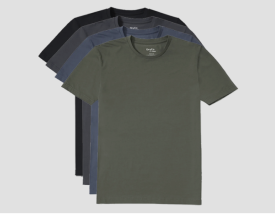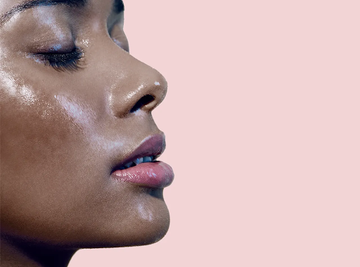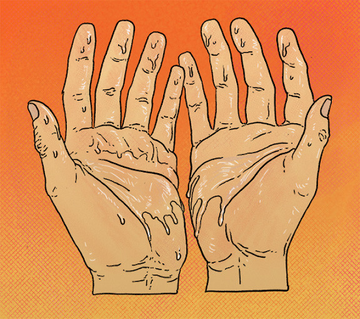Diversity is a big deal in the 21st century, but there are still so many things that differentiate humans which society largely ignores. Sweating is one of those things. Some people don’t sweat at all, some people sweat all the time, some people sweat in colours - and so much more. This post will take a look at why society needs to change its views on sweating since many of us are not typical when it comes to perspiration.
A New Glossary of Terms
We’ve spent the last 70 years advocating for rights, equality and advocacy for the most marginalised and under-represented people in our society. Women, people of colour, LGBT communities have fought for the same measure of dignity that their counterparts freely enjoyed.
More recently, we’ve seen the rise of neurodiversity. That movement posits individuals with brain differences due to autism, ADHD, dyslexia, learning disabilities and mood disorders should be recognized and praised for their unique challenges and abilities.
Sweating should join the ranks as well. After all, no two people sweat the exact same - there is an incredibly wide spectrum in terms of sweat volume and composition among humans. And everyone’s experience with sweat, whether they sweat too little, too much or whatever the case may be, differs.
A New Dictionary of Sweat Diversity
Due to sweat being a highly biologically unique process, we’ve postulated some terms modelled after neurodiversity, a concept to which sweat diversity resembles most.
- Hidrodiversity - A viewpoint that differences in sweating is normal, not necessarily a disease unless those differences are debilitating and life-threatening. People who are hidrodiverse produce sweat that may be notably different, but assuredly problematic.
- Hidrotypical - A person who doesn’t display unusual or atypical sweat patterns (ie. as too much, too little).
- Hidrodivergent - A hidrodivergent person is someone whose production of sweat is atypical, perhaps, viewed as unusual or excessive.
As a disclaimer, we want to remind readers that we are not trivializing the plight and hardships of those who suffer from extreme sweat conditions. Those with uncontrollable hyperhidrosis or those who can’t sweat at all (anhidrosis), need urgent care and treatment to avoid the complications these disorders can bring.
However, we have millions of people worldwide, who reside in the middle. They’re the ones who sweat so noticeably so as to be visible to their co-workers, family members, friends and strangers. And yet they’re able to live normal lives - as long as others don’t make them feel awkward about their sweat.
Society’s Misguided Views on Sweating
You’ve likely lived your entire life seeing sweat as something you have to get rid of and keep under control. You may never remember or think there was a time when heavy sweating was socially acceptable.
But there was.
Before the early 20th century, there is no indication that sweat management, deodorants and antiperspirants were really “a thing”. True, there’s evidence that ancient Egyptians and Greeks used a variety of methods to ward off sweating and B.O.But it doesn’t appear to have been considered much of a social (and hygienic) flaw.
Things changed in 1919.
An ad created by James Young made its debut in the Ladies Home Journal to sustain the momentum of then popular deodorant, Odorono, pioneered by entrepreneur, Edna Murphy. It was a revamp to his previous ads, which were tame and science-driven. This new ad, titled, “Within the Curve of a Woman’s arm” depicted a romantic situation, where a woman’s sweat and body odour could offend a man. That man would then lose his interest in her, and that woman would become a social outcast.
Thinking about it now might spur a feeling of bitterness - it was controversial back then - but the message had a massive impact. Sales for that deodorant not only rose 112%, but America’s perception of sweat and body odour began to shift. It became a cultural phenomenon in America and beyond, that sweating and body odour was seen as unacceptable.
The original essence of managing sweat for hygienic purposes was lost. It was lost in favour of a new beauty standard - the sweatless, odourless person.
We Need to Reverse Our View on Sweating
True, body odour can be unpleasant. Sweating can be problematic because it can interfere with one’s productivity at work. It can ruin makeup, shirt fabrics and more. But sweating as a whole isn’t a problem.
First and foremost, sweating is your body’s natural cool mechanism - there’s nothing inherently harmful about sweat. It doesn’t hurt you to sweat and it doesn’t harm anyone else unless you carry an infection that can be transmitted through sweat.
Second, the only reason we treat sweating the way we do is because of social and cultural standards, which are arbitrary at best, tone-deaf at worst.
But the biggest reason we need to change our view of sweating is because everyone’s sweat mechanisms differ - for various reasons. Genetics, lifestyle, body weight/height, biochemistry, diet (dictated by their geographical location and culture) and much more. These are the same factors that influence other differences we see in humans such as height and physique, athletic ability, intelligence and creativity, personality traits, and much more.
Scientists have found genes that can turn sweat production way up or down. They’ve discovered differences in neurochemistry that influence the volume of sweat. Researchers are also finding differences in sweat composition among the sexes and sweat gland distribution among different ethnicities.
We can draw parallels to the neurodiversity movement. We know that genes, gender, environment, experiences, diet, culture and a multitude of other factors shape our brain wiring. That’s why we all have different ways of thinking, feeling, and moving, even if we may or may not fall under a category. People who have severe or extreme cases of mood disorders or neurodevelopmental disorders no doubt require medical management to help improve their quality of life. But there are many people who have these conditions and live normal lives to some degree.
Sweating is hardly any different. If we can accept that nature and nurture affects how we look and feel, why can’t we accept that those influences affect how we sweat? Yes, extreme hyperhidrosis and the complete inability to sweat need treatment for the sake of keeping someone healthy. But individuals who are already living normal lives and who just sweat more than average shouldn’t feel like social outcasts.
Sweat is Not Your or My Enemy
The truth is society largely shapes our view of people who differ from us. Advertising, politics, entertainment and pop culture and other elements all shape culture.It should come as no surprise that they have warped our views of sweat, especially advertising and pop culture.
But things can change - and they should. If we have neurodiversity, and au naturel movements (body hair acceptance), there should be a place to accept people who sweat more. This is vital especially in the workplace, where hyperhidrosis and excessive sweating seems most taboo. Why should talented people who have so much to offer their employers, their families and their communities hide simply because they sweat more?
Want to learn more about hyperhidrosis and ways to manage it? Check out our Neat Freaks blog for helpful tips and insights to control excessive sweating.








